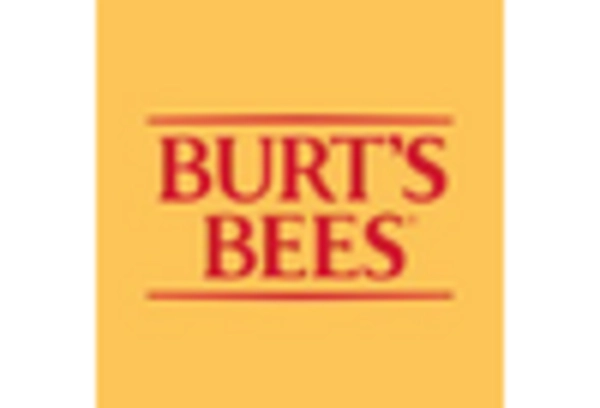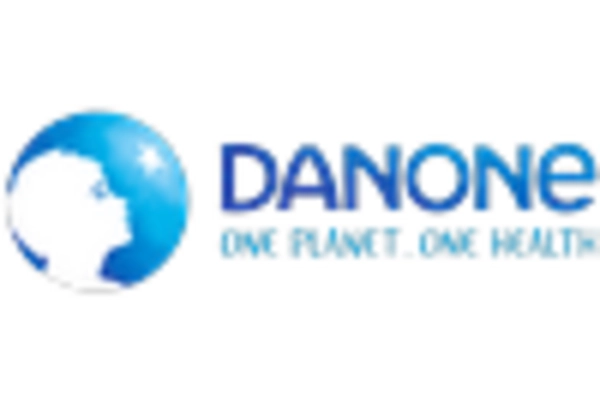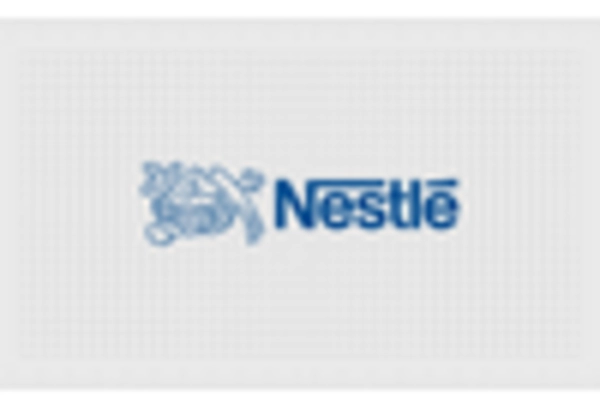Regulatory Support for Organic Products
The organic infant-formula market benefits from robust regulatory frameworks that support the production and sale of organic products. In North America, government agencies have established stringent guidelines for organic labeling, ensuring that products meet specific standards. This regulatory support not only enhances consumer trust but also encourages manufacturers to invest in organic formulations. As of 2025, the organic certification process has become more streamlined, allowing for increased market entry of new brands. This regulatory environment is expected to foster growth in the organic segment, as consumers increasingly seek products that align with their values regarding health and sustainability.
Rising Disposable Income Among Families
The organic infant-formula market is positively impacted by the rising disposable income levels among families in North America. As economic conditions improve, parents are more willing to invest in premium products that they perceive as healthier for their infants. This trend is particularly evident in urban areas, where families are increasingly prioritizing organic options despite the higher price point. Market analysis indicates that households with higher incomes are 30% more likely to purchase organic infant formula compared to lower-income households. This shift in spending habits is likely to drive further growth in the organic segment, as more families seek to provide the best nutrition for their children.
Sustainability and Environmental Concerns
The organic infant-formula market is increasingly shaped by sustainability and environmental concerns. Parents are becoming more aware of the ecological impact of their purchasing decisions, leading to a preference for organic products that are perceived as more environmentally friendly. This trend is supported by a growing body of research indicating that organic farming practices can reduce environmental degradation. In North America, approximately 25% of parents report that sustainability influences their choice of infant formula. As awareness of environmental issues continues to rise, the demand for organic infant formulas is likely to grow, as consumers seek products that align with their values regarding sustainability.
Increasing Health Consciousness Among Parents
The organic infant-formula market is experiencing a notable shift as parents become increasingly health-conscious. This trend is driven by a growing awareness of the potential health risks associated with conventional infant formulas, which often contain synthetic additives and preservatives. As a result, many parents are opting for organic alternatives that promise cleaner ingredients and higher nutritional value. According to recent data, the organic segment of the infant formula market has seen a growth rate of approximately 15% annually in North America. This heightened focus on health and wellness is likely to continue influencing purchasing decisions, as parents prioritize the well-being of their children.
Influence of Social Media and Online Communities
The organic infant-formula market is significantly influenced by the rise of social media and online parenting communities. These platforms serve as vital sources of information and recommendations for new parents, who often turn to social media for guidance on infant nutrition. Influencers and parenting blogs frequently promote organic products, highlighting their benefits and encouraging their followers to make informed choices. This digital word-of-mouth marketing has the potential to increase brand visibility and consumer trust. As of November 2025, it is estimated that nearly 40% of parents rely on social media for product recommendations, which could further propel the demand for organic infant formulas.


















Leave a Comment